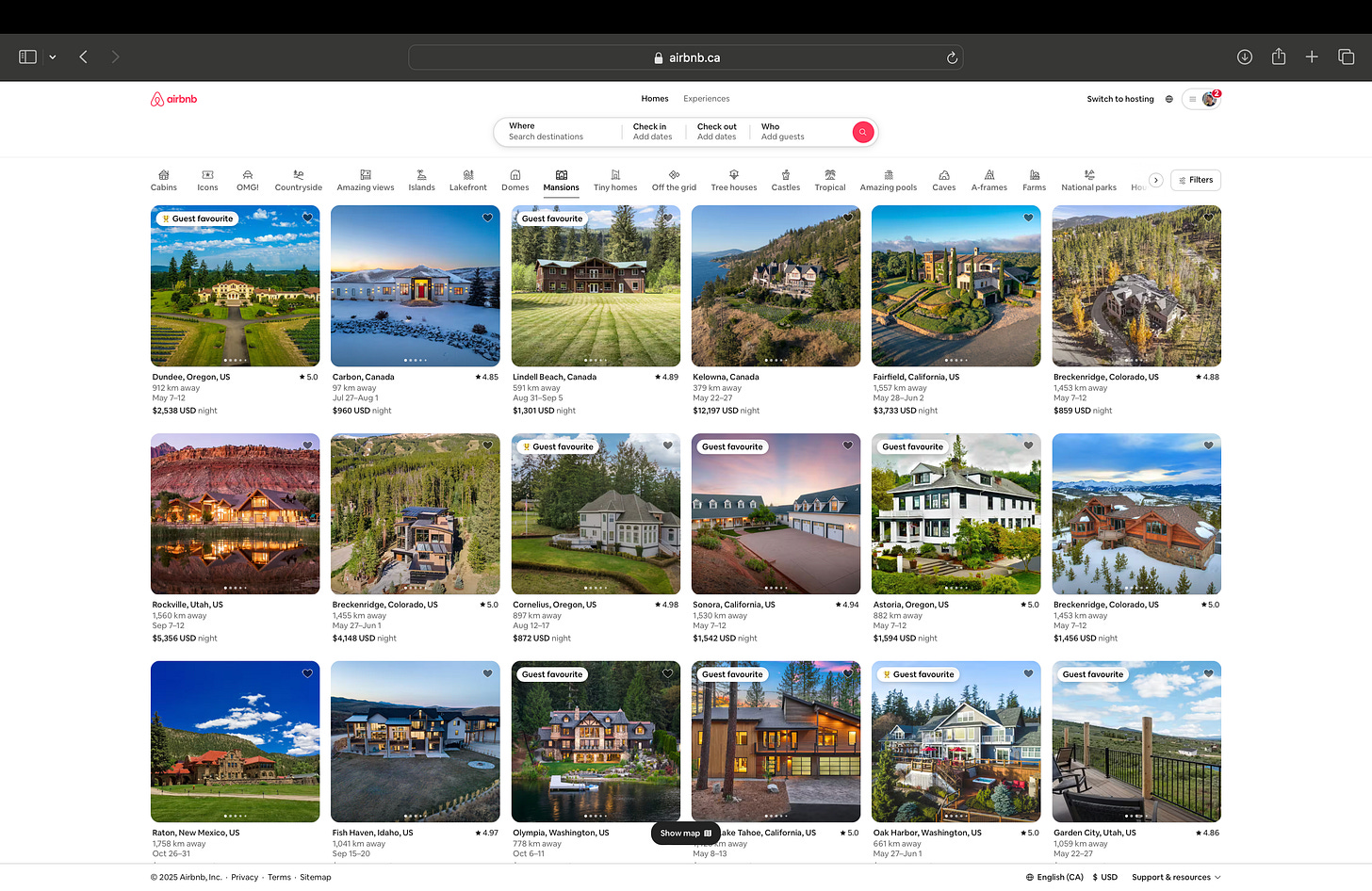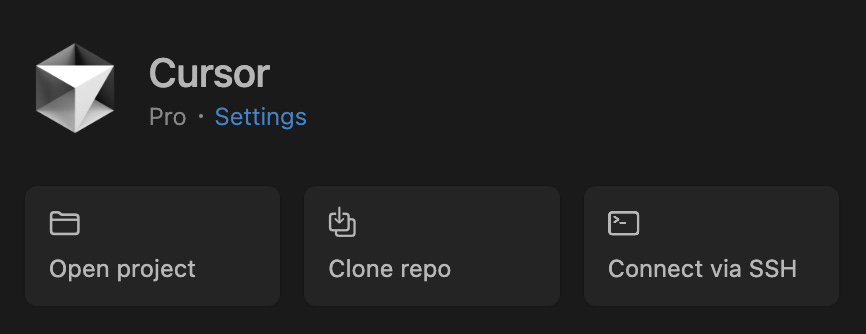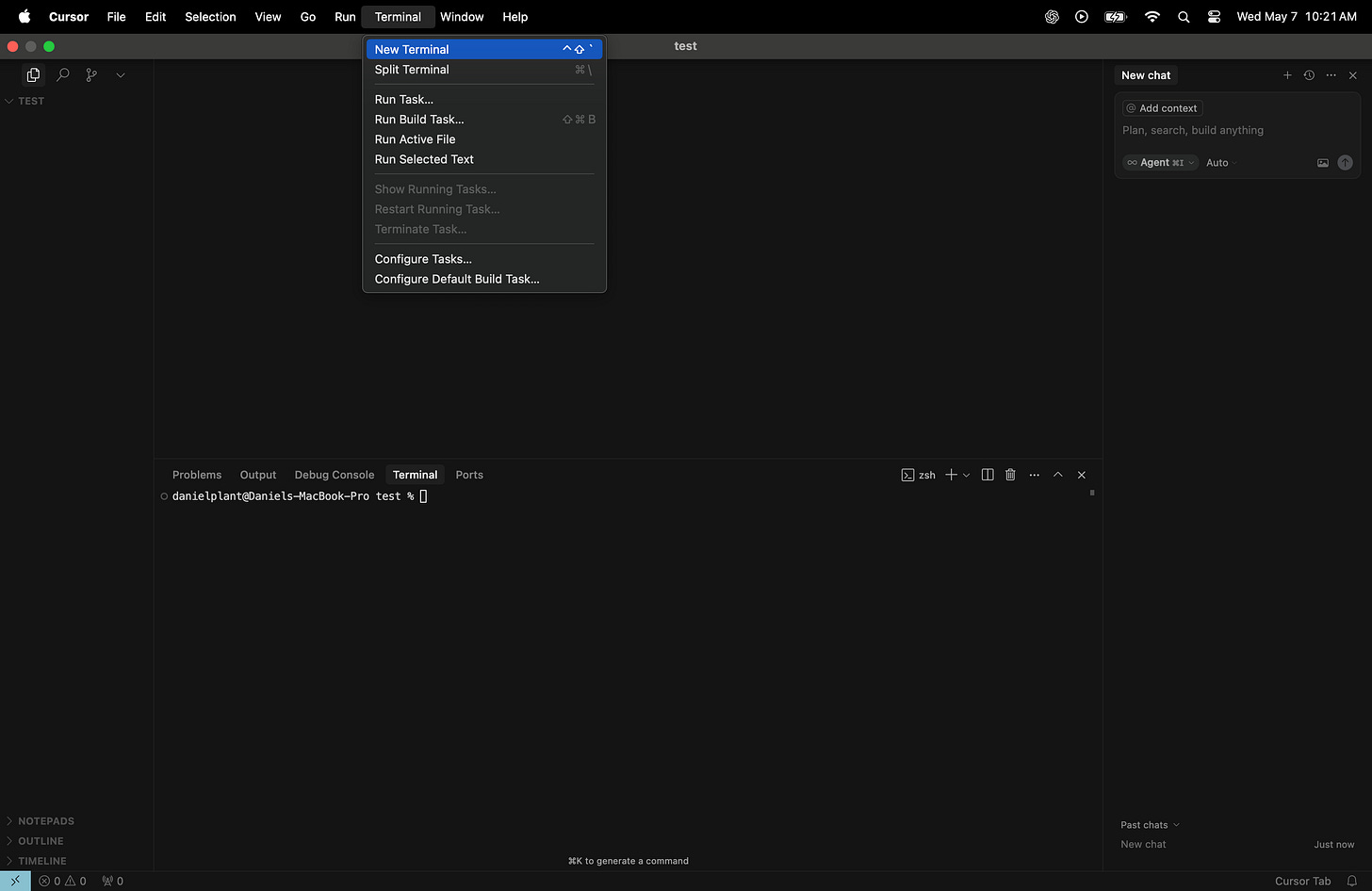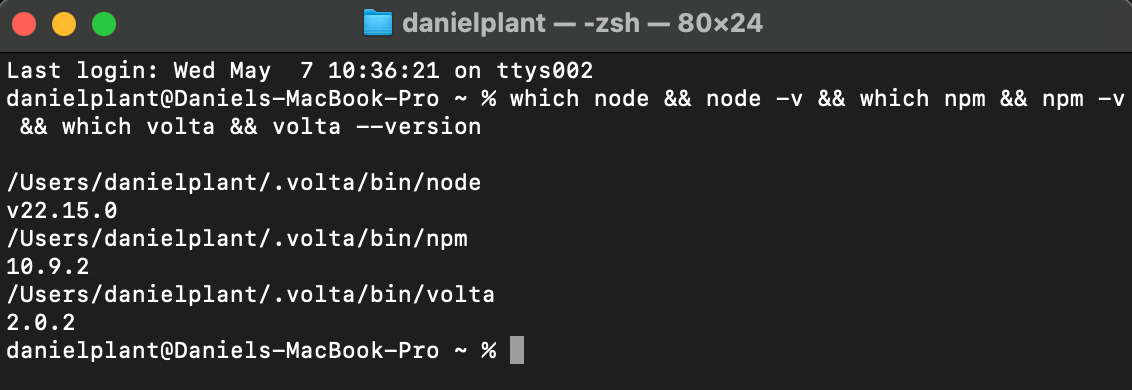Even A Monkey Can Do it
How to get on the path to building a one-person company using modern software. There are no more bottlenecks, there are no more excuses.
This post is for anyone who has no programming experience, always wanted to build a “web app”, and wants to get started on a simple and practical project. It’s not about economics. But it is about what you should do with AI.
AI Way Way
Vibe coding. Programming is dead. Anyone can build an app. Blah blah blah.
Remember the old saying - and I’m paraphrasing: there’s no such thing as business, just humans exaggerating as needed to sell others on whatever they want to believe. There’s a market for ideas that AI can do everything. And there’s the Luddites in the other corner telling you that AI is a scam. Whatever.
Have you tried to use any of the new “AI coding tools” like Replit? Virtually everyone promoting the idea that “you can code without coding” is already a coder. I am not a coder, I am an economist. And Replit as with Cursor and many others is fun and easy to use. Their use, especially when getting started, just isn’t obvious.
Creating a modern web application with the functionality (though perhaps not the polish) of something like Airbnb - the IKEA of the Internet, appealing aesthetic at accessible price points though the experienced functionality can be frustrating - is filled with trap doors even if you believe that it’s possible to build software without coding experience.
For what it’s worth, this is something you should believe. But it doesn’t mean that doing so isn’t a pain in the neck. I will try here to help make it more obvious.
Put another way, with AI-assisted tools like Cursor, a solid plan (at least in your mind), and the right attitude, you can build pretty sophisticated web applications. This guide will walk you through setting up your “development environment” and creating the foundation for your web app. Cursor is the (better) alternative to Windsurf which yesterday was acquired by OpenAI.
Let’s say we wanted to have something like this - a catalogue of property listings - online by the end of the week. How would we start?
The Tool Box
I find it helpful to reason by analogy. Any project - software or not software - can be compared to building a house. When building a house, you need structural components, tools, and a blueprint. In the world of web development, Next.js is like a premium home construction kit that comes with pre-built structural components, specialized tools, and flexible blueprints all in one package.
This isn’t important right now but you will also hear about something called React. React is the basic building materials - the bricks, lumber, and nails. React gives you the fundamental pieces to build a user interface, but you still need to figure out how to arrange them, connect plumbing, install electrical systems, and ensure the foundation is solid. That's where Next.js comes in.
I will assume here that you have already downloaded and subscribed to Cursor - one of the best things you can do other than buying shares in Cursor or building your own one-person-company app - and know what “the terminal” is. If not you can email us, ask Claude, or some other lesser expert.
Baby Steps
When you open Cursor (as a Pro subscriber) you will see the following. Choose “Open project”.
Then you will in the main window - see just below. Navigate to the top and open the terminal. This is what you will see:
So, to recap so far. We have opened Cursor then added the terminal window within Cursor. The we run the following command:
npx create-next-app@latest property-catalogueI chose property-catalogue as the name of the project/app but you can pick anything you like. Consider property-catalogue as equivalent to {insert here project name}.
After you hit enter, you will see the following.
Basically you have to answer the setup questions. Just say yes to everything exactly as I have done just above here.
Then you will almost definitely get the following message:
Whether you get this message or not, this is one of those trap doors that can drive you crazy if you don’t fix the issue. It has to do with permissions and directories.
Getting Permission
To easily manage Node.js - including getting updates - without this type of permission error, we need to install Volta in your Mac Terminal (not Cursor):
curl https://get.volta.sh | bashIt will look like this:
Then close and reopen your Terminal (first time we do this) to ensure Volta loads correctly. This is very important otherwise you will get other errors.
We are not out of the woods yet as Volta is not yet wired into the terminal startup. To fix that we need to add Volta to the configuration file which is known as ~/.zshrc. Still in the Mac terminal we run:
echo 'export VOLTA_HOME="$HOME/.volta"' >> ~/.zshrc
echo 'export PATH="$VOLTA_HOME/bin:$PATH"' >> ~/.zshrcWe get:
For the second time, we then reload the terminal. And we run:
source ~/.zshrcJust like this:
When you reopen then you can do the following check with this one-liner to verify Volta is managing Node correctly:
which node && node -v && which npm && npm -v && which volta && volta --versionYou should see the following output:
Next, install Node.js and npm safely with Volta:
volta install node
volta install npmWhich will look like this:
Finally, ensure Volta is configured in your terminal by running these commands:
echo 'export VOLTA_HOME="$HOME/.volta"' >> ~/.zshrc
echo 'export PATH="$VOLTA_HOME/bin:$PATH"' >> ~/.zshrc
source ~/.zshrcWhich will look like this:
And then check if Volta correctly manages your installations by running this command:
which node && node -v
which npm && npm -v
which volta && volta --versionWhich will look like this:
Return to Cursor
Go back to your Cursor terminal, navigate into your newly created app directory, and launch your development server:
cd property-catalogue
npm run devThis is what you will see:
Piece of Cake
Open your browser and go to: http://localhost:3000
Pretty cool for 10 minutes of effort?
With tools like Cursor and Next.js, you've already created a functioning web application foundation in just minutes. Is it perfect? No. Will you encounter more technical hurdles? Almost certainly.
But the gap between non-programmers and functional web development is narrowing. The promise of AI-assisted coding isn't that it eliminates all challenges—it's that it makes those challenges manageable for newcomers. And that shift, however modest it might seem in practice, represents a genuinely meaningful democratization of technology creation.
I’ll keep you posted on what happens next.















